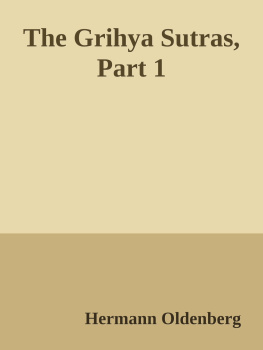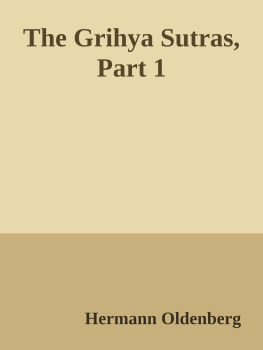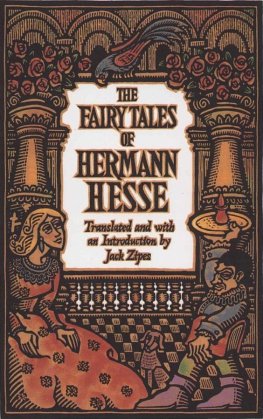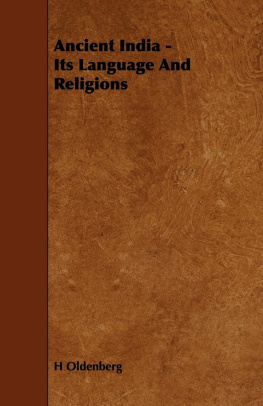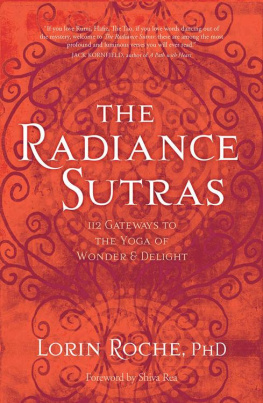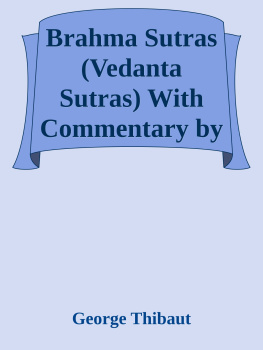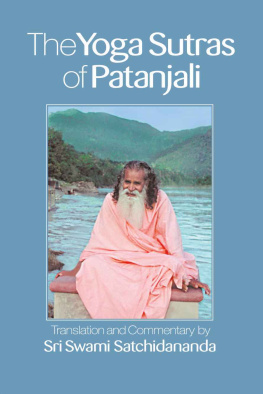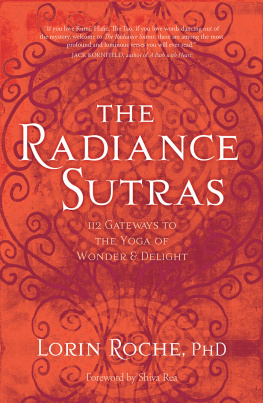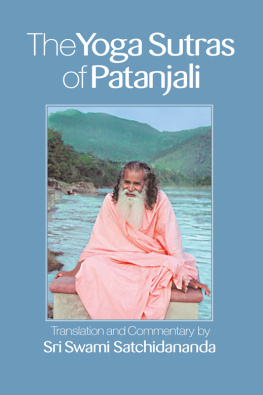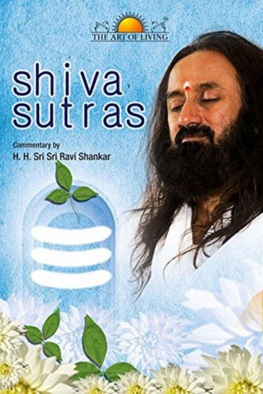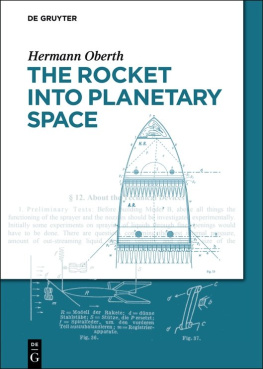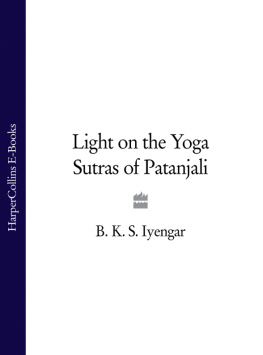Hermann Oldenberg - The Grihya Sutras, Part 2
Here you can read online Hermann Oldenberg - The Grihya Sutras, Part 2 full text of the book (entire story) in english for free. Download pdf and epub, get meaning, cover and reviews about this ebook. genre: Art. Description of the work, (preface) as well as reviews are available. Best literature library LitArk.com created for fans of good reading and offers a wide selection of genres:
Romance novel
Science fiction
Adventure
Detective
Science
History
Home and family
Prose
Art
Politics
Computer
Non-fiction
Religion
Business
Children
Humor
Choose a favorite category and find really read worthwhile books. Enjoy immersion in the world of imagination, feel the emotions of the characters or learn something new for yourself, make an fascinating discovery.
- Book:The Grihya Sutras, Part 2
- Author:
- Genre:
- Rating:5 / 5
- Favourites:Add to favourites
- Your mark:
- 100
- 1
- 2
- 3
- 4
- 5
The Grihya Sutras, Part 2: summary, description and annotation
We offer to read an annotation, description, summary or preface (depends on what the author of the book "The Grihya Sutras, Part 2" wrote himself). If you haven't found the necessary information about the book — write in the comments, we will try to find it.
The Grihya Sutras, Part 2 — read online for free the complete book (whole text) full work
Below is the text of the book, divided by pages. System saving the place of the last page read, allows you to conveniently read the book "The Grihya Sutras, Part 2" online for free, without having to search again every time where you left off. Put a bookmark, and you can go to the page where you finished reading at any time.
Font size:
Interval:
Bookmark:

THE
GRIHYASUTRAS
RULES OF VEDIC DOMESTIC CEREMONIES
TRANSLATED BY
HERMANN OLDENBERG
GOBHILA, HIRANYAKESIN, APASTAMBA
APASTAMBAS YAGNA-PARIBHASHA-SUTRAS
TRANSLATED BY
F. MAX MULLER
Clarendon: The Oxford University Press
[1892]
[p. vi] [p. vii]
CONTENTS.
PAGE
GOBHILA-GRIHYA-SuTRA.
TRANSLATION
HIRANYAKESI-GRIHYA-SuTRA.
TRANSLATION
APASTAMBA-GRIHYA-SuTRA.
TRANSLATION
SYNOPTICAL SURVEY OF THE CONTENTS OF THE GRIHYASuTRAS
APASTAMBAS YAGnA-PARIBHaSHa-SuTRAS.
TRANSLATION
INDEX
Transliteration of Oriental Alphabets adopted for the Translations of the Sacred Books of the East
[p. viii] [p. ix]
GRIHYASUTRAS.
WE begin our introductory remarks on the literature of the Grihyasutras with the attempt to collect the more important data which throw light on the development of the Grihya ritual during the oldest period of Hindu antiquity.
There are, as it seems, no direct traces of the Grihya ceremonies in the most ancient portion of Vedic literature. It is certain indeed that a number of the most important of those ceremonies are contemporaneous with or even earlier than the most ancient hymns of the Rigveda, as far as their fundamental elements and character are concerned, whatever their precise arrangement may have been. However, in the literature of the oldest period they play no part. It was another portion of the ritual that attracted the attention of the poets to whom we owe the hymns to Agni, Indra, and the other deities of the Vedic Olympus, viz. the offerings of the Srauta-Ritual with their far superior pomp, or, to state the matter more precisely, among the offerings of the Srauta-Ritual the Soma offering. In the Soma offering centred the thought, the poetry, and we may almost say the life of the Vasishthas, of the Visvamitras, &c., in whose families the poetry of the Rigveda had its home. We may assume that the acts of the Grihya worship, being more limited in extent and simpler in their ritual construction than the great Soma offerings, were not yet at that time, so far as they existed at all, decked out with the reciting of the poetic texts, which we find later on connected with them, and which in the case of the Soma offering came early to be used. Probably they were celebrated in simple unadorned fashion;
what the person making the offering had to say was doubtless limited to short, possibly prose formulas, so that these ceremonies remained free from the poetry of the above-mentioned families of priests [*1]. We think that the character of the verses given in the Grihyasutras, which had to be repeated at the performance of the different ceremonies, justifies us in making these conjectures. Some of these verses indeed are old Vedic verses, but we have no proof that they were composed for the purposes of the Grihya ceremonies, and the connection in which we find them in the Rigveda proves rather the contrary. Another portion of these verses and songs proves to have been composed indeed for the very Grihya ceremonies for which they are prescribed in the texts of the ritual: but these verses are more recent than the old parts of the Rigveda. Part of them are found in the Rigveda in a position which speaks for their more recent origin, others are not contained in the Rigveda at all. Many of these verses are found in the more recent Vedic Samhitas, especially in the Atharvaveda Samhita which may be regarded in the main as a treasure of Grihya verses; others finally have not as yet been traced to any Vedic Samhita, and we know them from the Grihyasutras only. We may infer that, during the latter part of the Rigveda period, ceremonies such as marriage and burial began to be decked out with poetry as had long been the case with the Soma offering. The principal collection of marriage sentences [*2] and the sentences for the
burial of the dead [*1] are found in the tenth Mandala of the Rigveda, which, for the most part, is known to be of later origin than the preceding portions of the collections [*2]. If we look into the character of the verses, which these long Grihya songs are composed of, we shall find additional grounds for assuming their early origin. A few remarks about their metrical character will make this clear [*3]. There is no other metre in which the contrast between the early and later periods of Vedic literature manifests itself so clearly as in the Anushtubh-metre [*4]. The Anushtubh hemistich consists of sixteen syllables, which are divided by the caesura into two halves of eight syllables each. The second of these halves has as a rule the iambic ending (), though this rule was not so strictly carried out in the early as in the later period [*5]. The iambic ending is also the rule in the older parts of the Veda for the close of the first half, i.e. for the four syllables before the caesura [*6]. We know that the later prosody, as we see it in certain late parts of Vedic literature, in the Pali Pitakas of the Buddhists, and later in the great epic poems, not only departs from the usage of the older period, but adopts a directly contrary course, i.e. the iambic ending of the first pada, which was formerly the rule, is not allowed at all later, and instead of it the prevailing ending is the antispast () It goes without saying that such a change in metrical usage, as the one just described, cannot have
taken place at one jump. And accordingly a consideration of the Vedic texts reveals a transition period or rather a series of several transition periods between the old and the new standpoints. The first change is that every other ending of the first pada is allowed by the side of the iambic ending. The two forms of the ending, the one prevailing in the earliest, and the one prevailing in the later period of the prosody, the iambic () and the antispastic (), are those that occur most frequently in the intermediate period, but besides them all other possible forms are allowed [*1].
This is precisely the stage of metrical development which the great Grihya songs of the tenth Mandala of the Rigveda have reached. Let us consider, for instance, the marriage songs and the marriage sayings, X, 85, and see what kind of ending there is at the end of the first pada. Of the first seventeen verses of this Sukta sixteen are in Anushtubh metre (verse 14 is Trishtubh); we have therefore thirty-two cases in which the metrical form of these syllables must be investigated. The quantity of the syllable immediately preceding the caesura being a matter of indifference, we have not sixteen but only eight a priori possible combinations for the form of the last four syllables of the pada; I give each of these forms below, adding each time in how many of the thirty-two cases it is used:
We see that all the possible combinations are actually represented in these thirty-two cases, and accordingly the metrical build of this Sukta shows that it belongs to a period to which only the latest songs of the Rigveda collection can be referred, but the peculiarities of which may be often noticed in the Atharvaveda and in the verses scattered throughout the Brahmana literature [*1].
A hasty glance suffices to show that those verses of the Grihya ritual which do not appear in the Samhitas, but which are quoted at full length in the Grihyasutras, are also in the same stage. For instance, the seven Anushtubh verses which are quoted Sankhayana-Grihya I, 19, 5. 6, give us the following relations, if we investigate them as we did those in Rigveda X, 85:
Font size:
Interval:
Bookmark:
Similar books «The Grihya Sutras, Part 2»
Look at similar books to The Grihya Sutras, Part 2. We have selected literature similar in name and meaning in the hope of providing readers with more options to find new, interesting, not yet read works.
Discussion, reviews of the book The Grihya Sutras, Part 2 and just readers' own opinions. Leave your comments, write what you think about the work, its meaning or the main characters. Specify what exactly you liked and what you didn't like, and why you think so.

